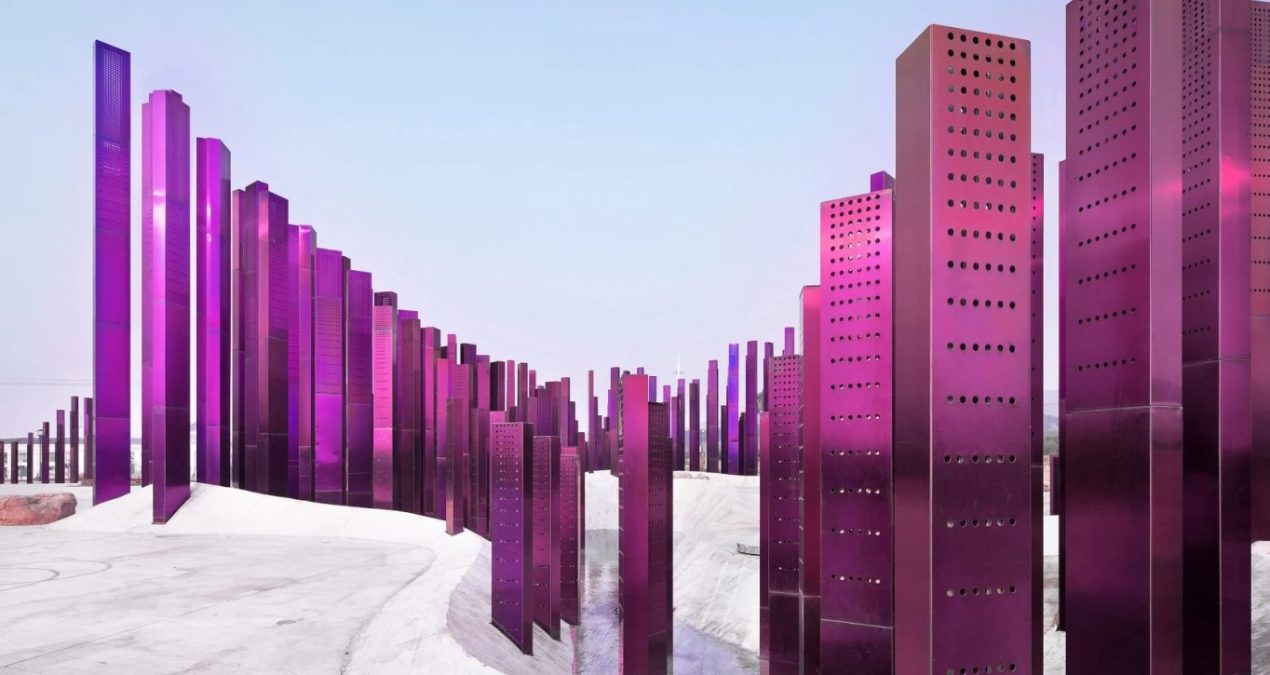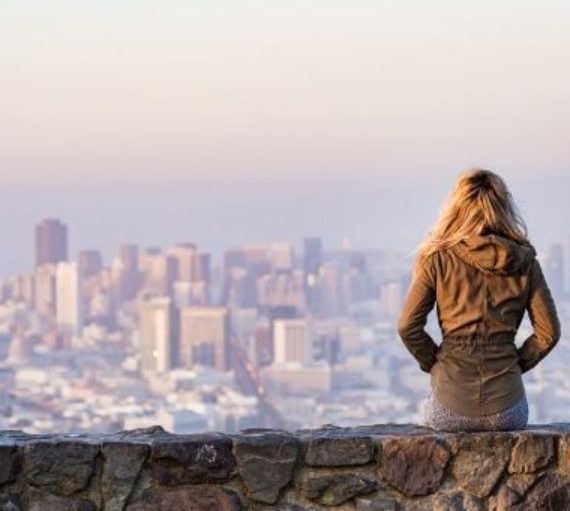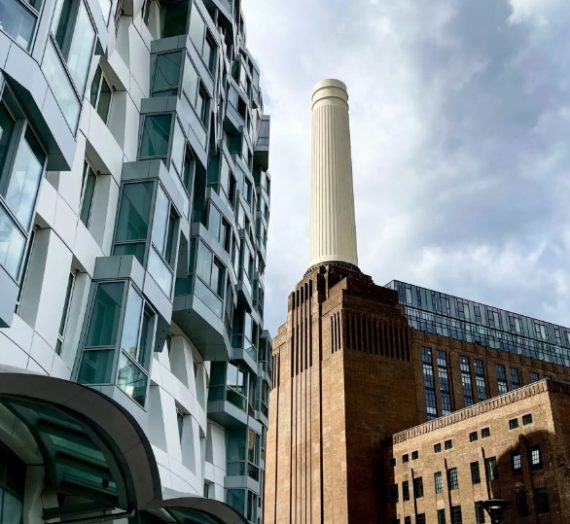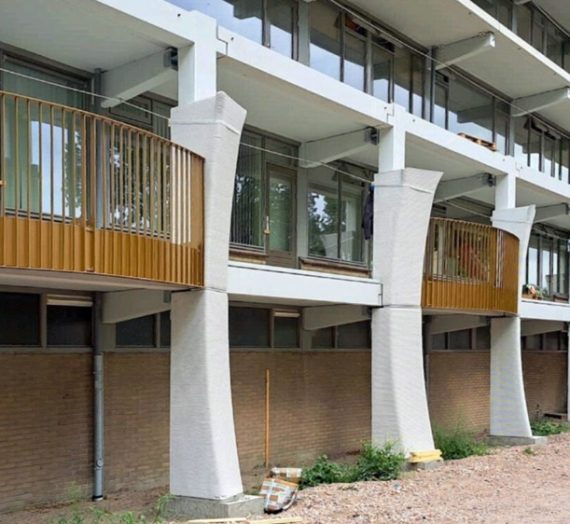Purple is a color of bold expression, deeply associated with royalty, sophistication, and exclusivity. When used in architecture, it transforms ordinary spaces into extraordinary statements of opulence. Here, we delve deeper into 7 architectural marvels that demonstrate the versatile power of purple in design.
1. Comédie de Béthune – National Drama Center (Manuelle Gautrand Architecture, Béthune, France)
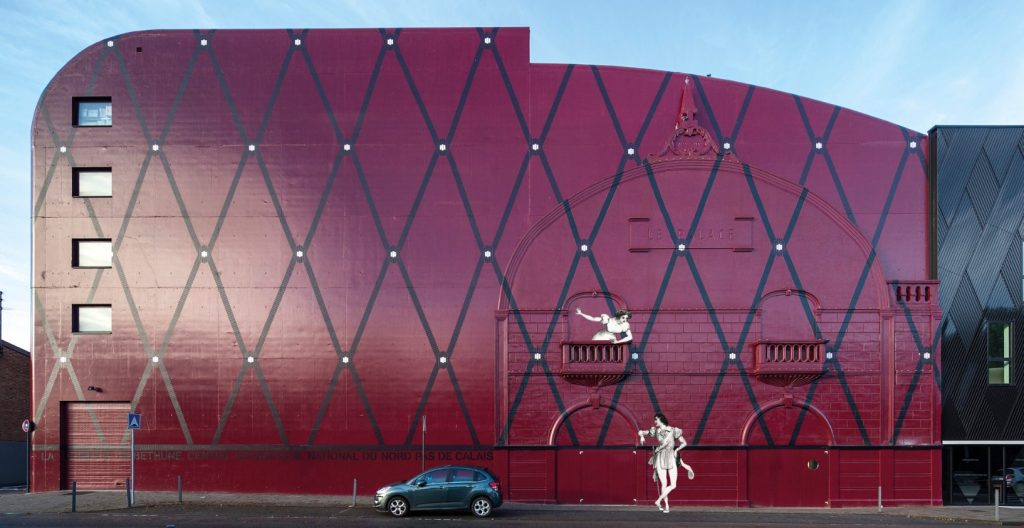
The Comédie de Béthune stands as a testament to the dramatic and regal nature of purple. The initial renovation in 1999 introduced a striking curved facade, coated in a purple concrete lacquer. This bold choice reflected the royal grandeur often associated with theatrical arts, turning the building itself into a piece of drama. In 2014, the addition of decorative black panels with diamond patterns created a subtle contrast, adding depth and texture. The juxtaposition of black and purple elements accentuates the building’s sophisticated character, making it a landmark that captures attention both during the day and under evening lights.
2. Garware Club House (Shashi Prabhu & Associates, Mumbai, India)
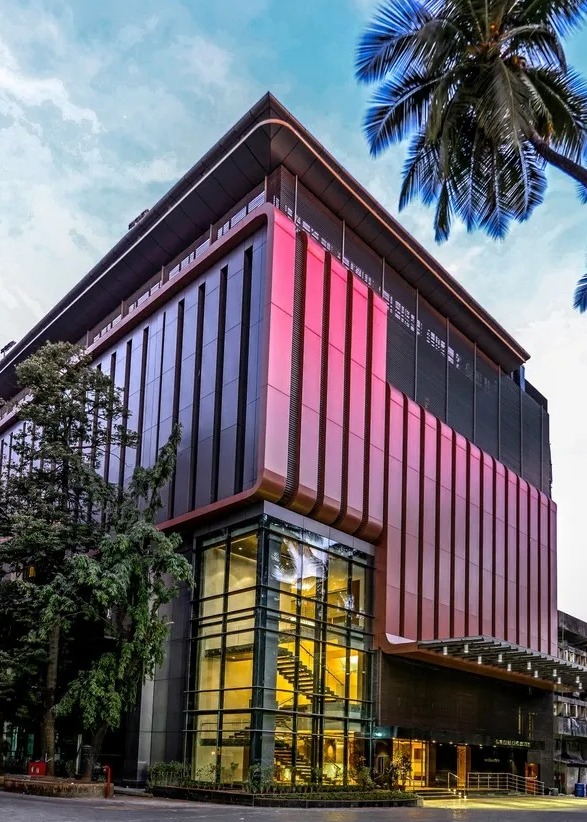
Located in the bustling city of Mumbai, the Garware Club House exudes luxury through its consistent use of lavender tones. The exterior features panels that shimmer in varying intensities of purple depending on the angle of sunlight, creating a dynamic visual experience. Inside, the club’s interiors carry the same lavender theme, with carefully chosen materials and textures that emphasize comfort and sophistication. This cohesive use of purple enhances the sense of exclusivity for club members, aligning perfectly with the high-end, urban lifestyle it represents.
3. Boutique Almira Sadar (SADAR + VUGA, Ljubljana, Slovenia)
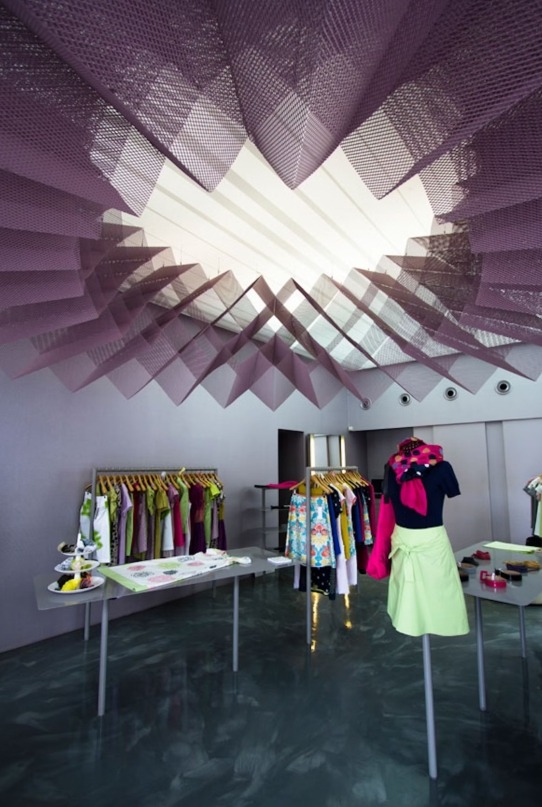
In Boutique Almira Sadar, purple is used to create an intimate and luxurious shopping experience. A suspended light installation dominates the boutique’s interior, casting a soft violet glow that interacts with nearby walls and reflective surfaces. This subtle use of color draws attention to the high-end products on display, reinforcing their exclusivity. The blend of natural and artificial lighting allows the boutique to feel cozy yet extravagant, making every visit feel like stepping into a world of tailored luxury.
4. Woo Nam Jai (IROJE KHM Architects, Seoul, South Korea)
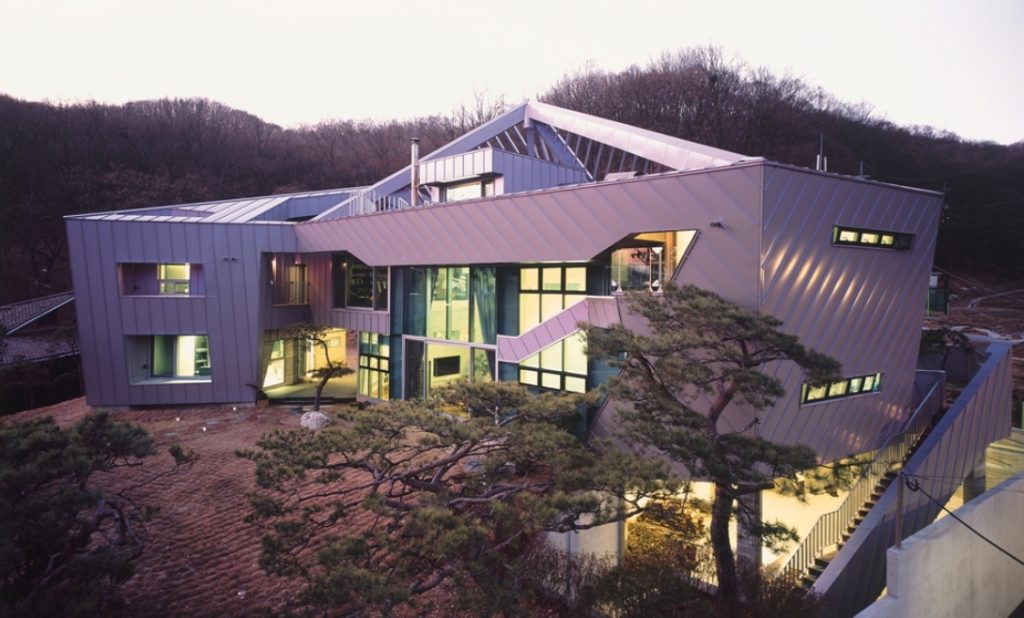
Nestled on a secluded forested hillside, Woo Nam Jai combines modern architecture with natural elegance. The house is enveloped in purple-tinted panels that provide an understated yet striking contrast to the green surroundings. The subtle color choice emphasizes the residence’s grandeur without clashing with the natural environment. The design extends to include patios and outdoor spaces, where the purple tones are seamlessly integrated, creating a harmonious dialogue between the house and its setting. This thoughtful use of color makes the home a serene yet commanding presence on the hillside.
5. Dui Restaurant (SuperLimão Studio, São Paulo, Brazil)
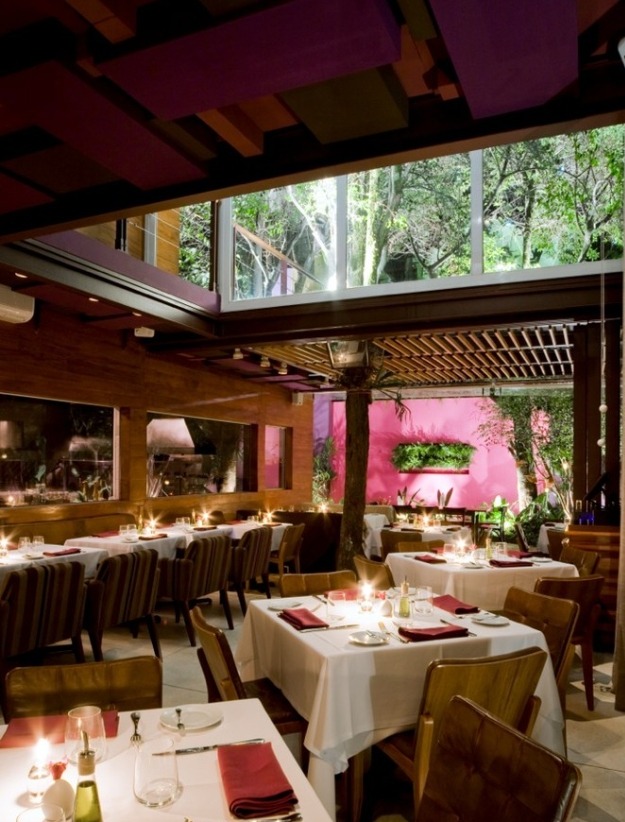
The Dui Restaurant in São Paulo takes a refined approach to using purple. The color appears in accents throughout the space: on feature walls, ceiling panels, and even the tableware. This restrained application enhances the restaurant’s luxurious ambiance without overwhelming diners. The careful placement of violet hues creates a warm and inviting atmosphere, while subtly influencing the perception of the space as an elite dining destination. The integration of purple into the design elevates the sensory experience, making every visit memorable.
6. Sacred Heart College Performing Arts Center (Tridente Architects, Somerton Park, Australia)
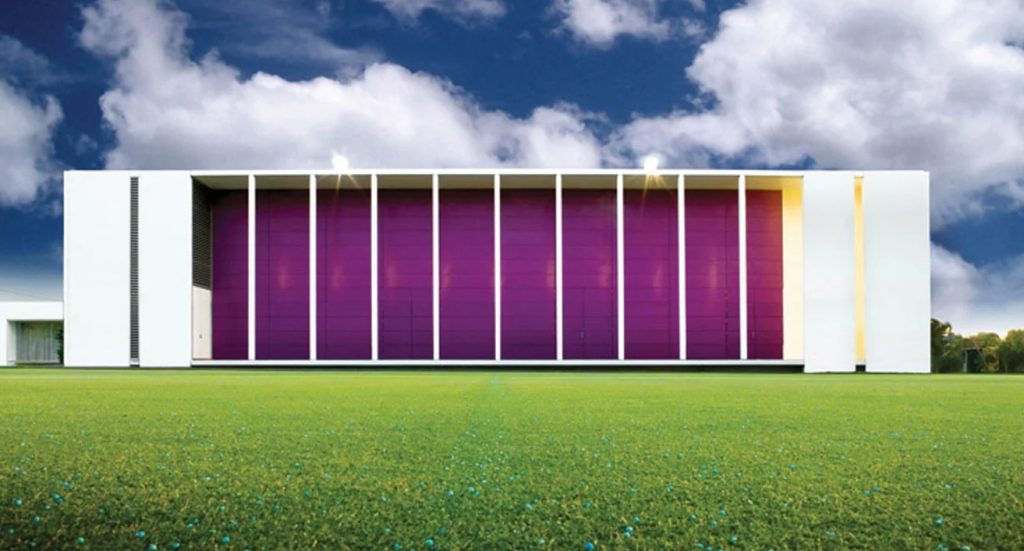
The Sacred Heart College Performing Arts Center is a stunning example of how purple can merge spirituality with modern design. The building’s semi-transparent facade glows with a soft lilac hue, filtering light into the interior and creating a calming effect. This design choice not only enhances the visual appeal of the structure but also imbues the chapel with a sense of serenity and reverence. The use of purple evokes both the divine and the regal, aligning perfectly with the building’s purpose as a place for reflection and performance.
7. Purple Whale (IROJE KHM Architects, Paju Book City, South Korea)
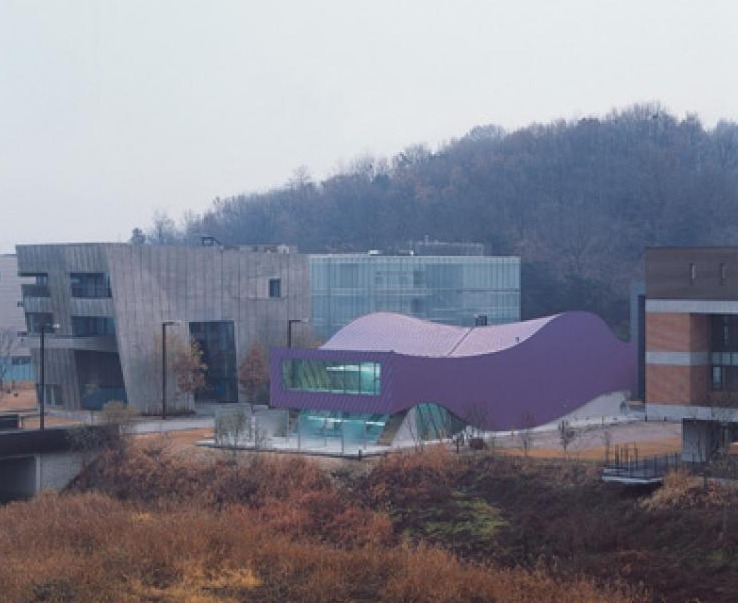
Located in Paju Book City, a hub for Korea’s publishing industry, the Purple Whale makes a bold statement with its vibrant purple panels. The color was chosen to help the building stand out in a district filled with architectural competition. Beyond its visual appeal, the choice of purple conveys creativity, sophistication, and prestige—qualities the publishing company wants to associate with its brand. The unconventional form of the building complements the boldness of the color, making it a landmark that symbolizes innovation and exclusivity.
Purple in Architecture: A Bold Yet Elegant Statement
Purple remains one of the most underutilized yet profoundly impactful colors in architectural design. Its association with wealth, sophistication, and creativity dates back centuries, yet its rarity in modern structures makes it even more remarkable when used effectively. The seven projects highlighted here demonstrate the versatility of purple, from commanding facades to subtle interior accents.
The color’s power lies in its ability to evoke strong emotions and associations. Whether symbolizing royalty, adding a sense of exclusivity, or simply providing a bold contrast to its surroundings, purple transforms spaces into more than just buildings—it turns them into experiences.
However, working with purple requires a delicate touch. Its boldness can easily overwhelm a design if overused or poorly integrated. Successful applications, like those seen in the Comédie de Béthune or Purple Whale, showcase how balance and creativity can amplify the architectural narrative. On the other hand, subtle uses, like in the Dui Restaurant or Sacred Heart College, show how even restrained touches can elevate a space’s elegance and identity.
In a world where architectural palettes often default to neutral tones, the careful and thoughtful use of purple serves as a reminder of the emotional and psychological power of color. It encourages architects and designers to push boundaries and explore how color can redefine a structure’s purpose and perception.
As architectural design continues to evolve, purple stands as a beacon for bold creativity and timeless sophistication. It challenges both creators and observers to see beyond the conventional and to embrace the extraordinary. For those willing to take the leap, purple offers endless opportunities to craft spaces that inspire, captivate, and leave a lasting impression.
Would you dare to incorporate this regal hue into your next architectural vision?

